Advertisement
'Let's Move On This': The '99 U.S. Women's National Team's Fight For Equality
Resume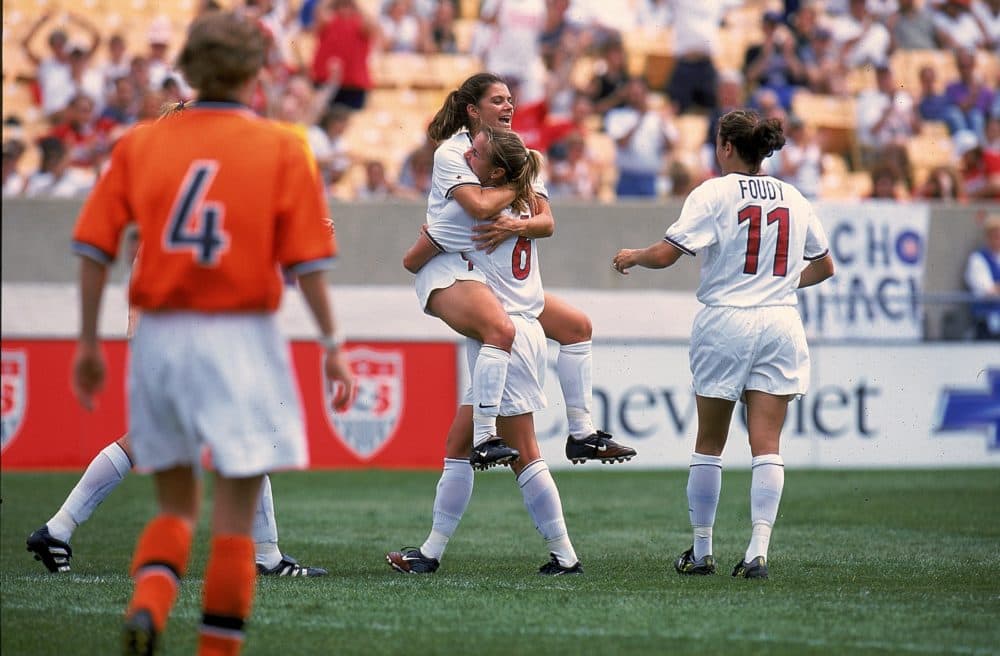
It started in December 1995. The team was in Chula Vista, California training for the 1996 Atlanta Summer Games. It was the first time women would play soccer at the Olympics. And nine of the team’s top players weren’t at camp. They were locked out in a contract dispute. One of them was Kristine Lilly.
"We were all scared," Lilly says.
Led by co-captains Julie Foudy and Carla Overbeck, the nine players spoke frequently via conference call.
"I remember one time, said, ‘Jules, I don’t know. I’m really scared that I won’t play in the Olympics,’ " Lilly remembers. "And she’s like, ‘Well, I am too. But this is gonna make a difference.’ "
"They couldn’t lock out all of us from the Olympics," Foudy says. "But we have to stay in it now. Because if they start pulling us apart, then we’re done."
The Team
Breaking up this group wouldn’t be easy. Foudy and Lilly were all of 24. But they and their fellow holdouts had been together for a while. Eight years earlier, in 1987, Foudy, Lilly, Joy Fawcett and Mia Hamm were at an under-19 national team retreat in the Midwest.
"The head coach of the national team was Anson Dorrance," Lilly says. "And he came into a room. And he was like, ‘I would like you guys to join the U.S. Women’s National Team.’ And I just sat there for a second. Because I’m like, ‘Um, I have to ask my parents.’ "
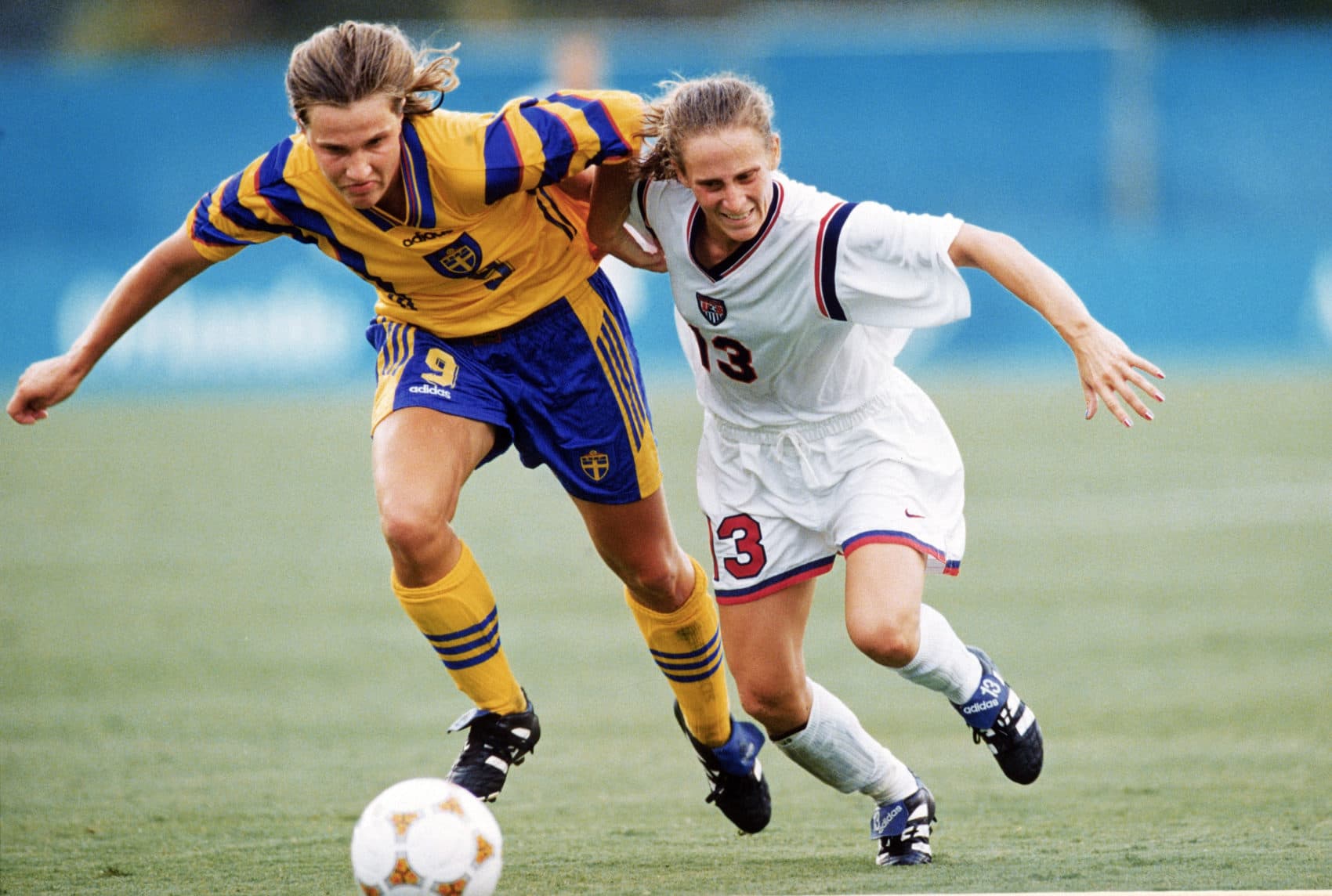
Two months later, Lilly was playing in China, where the 16-year-old became the youngest national team player to score a goal. She and her teammates traveled the globe. Writers called them "the Title IX babies." The conditions weren’t great. They played in baggy hand-me-downs from the men. When they flew …
"We'd get our tickets, and everyone’s like, ‘Who’s in the middle?’ And everyone would raise their hand," Lilly remembers. "Right down the middle of the plane is all of us sitting there. And you could see, 'cause we’re all in the same colored shirts."
"You would just see a strip of red going up every middle seat," Foudy says. "Or we were rows 44 and 45 — and 46 was smoking, back in the day. So you’d be essentially sitting in the smoking section going over to Europe."
In 1991, the team won the first Women’s World Championship (FIFA wasn’t ready to call it a World Cup yet). The players were thrilled to wear red, white and blue. So what if a little smoke got in their eyes?
But it was more than that.
"We’re staying in these dumpy hotels, and we’re hearing about the men’s team staying in these nice hotels," Foudy says. "And we’re getting $10 a day and no salary."
'Full Of Character'
Alan Rothenberg was President of U.S. Soccer at the time of that world championship. He’d taken the post a year earlier in 1990.
"Well, when I came on as President of United States Soccer Federation, I didn’t even know we had a women’s team," Rothenberg says.
He says the Federation had virtually no money, but they’d scraped together enough for a training camp and small per diems to help the women prepare for the 1991 tournament.
"The men’s team, by the way, had next to no funds as well," Rothenberg says. "But shortly after I became president of the Federation, we created a camp and paid the men to get ready for the 1994 World Cup."
Soccer was beginning to gain traction in the U.S. But the women still felt like second- class citizens. Julie Foudy says one time, the team had to take a Holiday Inn shuttle to a game.
"We used to label it as ‘character building’ in the beginning," Foudy says. "And then you start to get to a point where you’re like, ‘OK, we’re full of character now. We’re overflowing with character. Let’s move on this.’ "
Let’s move. But how? The team turned to tennis great Billie Jean King.
King knew all about character and discrimination. In 1973, as defending U.S. Open champion, King threatened to boycott the tournament unless the women received the same prize money as the men. That same year, she defeated Bobby Riggs in the famous Battle of the Sexes.
King mentored the U.S. women. She was especially close to Foudy.
"She used to say, ‘You have this blank canvas. And it’s not what you’re building for you, it’s what are you building for the next generation. So think about how you want it to be for them,’ " Foudy recalls. "And that was what we always kept in mind when we were in labor negotiations."
A Seat At The Table
Ellen Zavian was the first female attorney to represent NFL players. She’d been doing it for nearly a decade when Foudy and Team USA co-captain Carla Overbeck asked her for help with their contracts.
"These athletes had been together for so long that they came to me very unified," Zavian says.
"We did so much stuff together off the field," Kristine Lilly says. "Because there were no computers. There were no cell phones. We were reading books, we were playing cards, we were playing board games. It was just a different time. And that built camaraderie, trust, love for each other."
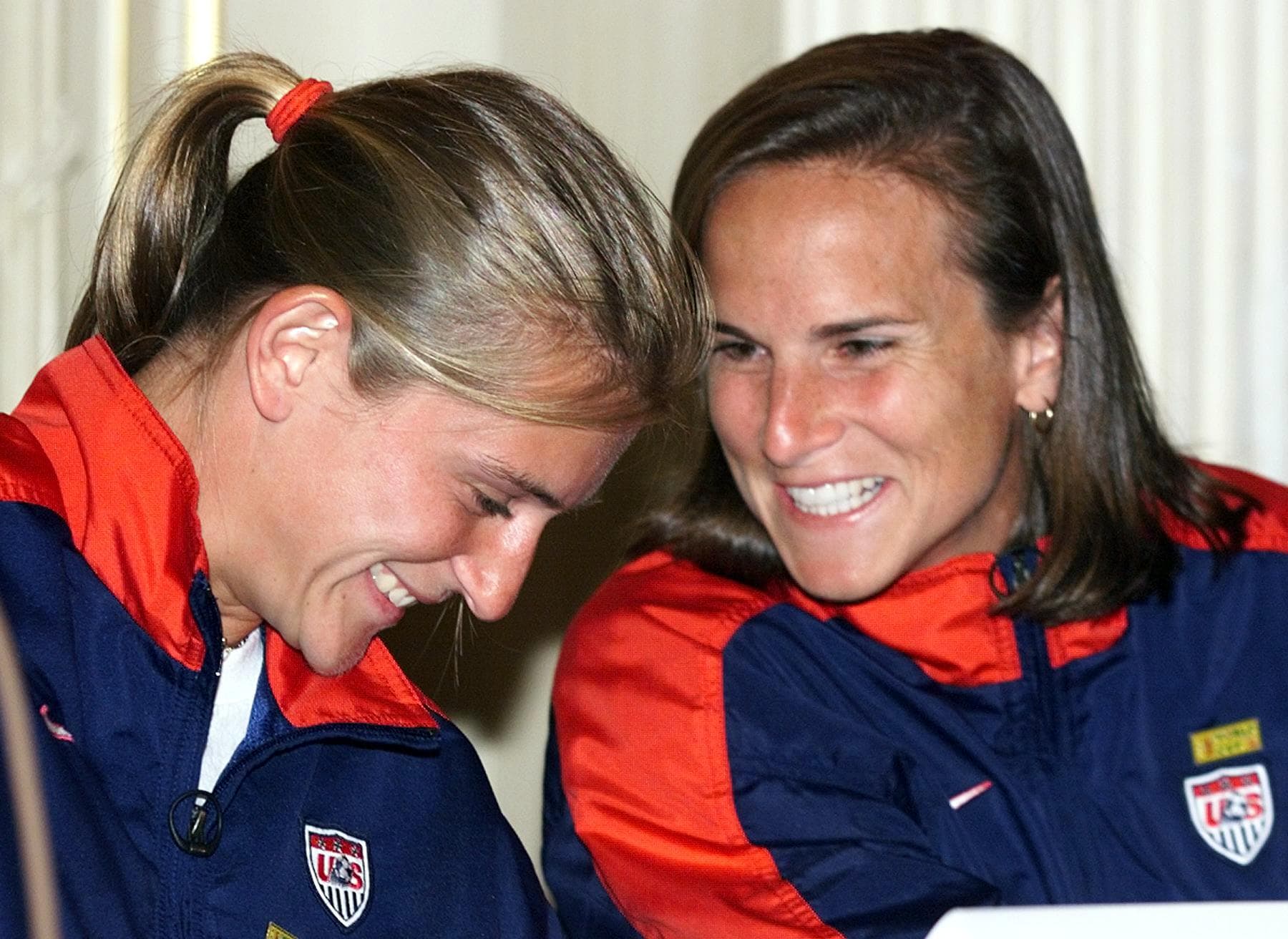
In late 1995, with the Olympics just over the horizon, the nine women got new contracts from the U.S. Soccer Federation. According to these contracts, the women would only receive an Olympic bonus if they took gold in Atlanta. The men would get bonuses for gold, silver or bronze.
Following Ellen Zavian’s advice, Foudy, Lilly and their teammates crossed out the contested clauses, then faxed their contracts back to U.S. Soccer. In response, U.S. Soccer cancelled their invitations to the Chula Vista training camp. The Federation didn’t know it, but Zavian says the lockout was part of her plan.
"I very much wanted a lockout, because the public looks at strikes as players whining," Zavian says. "And I had been through an ’87 strike with NFL players where there were scabs. So from that experience, I realized that a lockout actually brings the media and the fans much more supportive of the players."
The nine locked out players and Ellen Zavian dug in for what looked like a long standoff.
"And then, somewhere along the line, I got a call at, like, six in the morning from Alan [Rothenberg], who was on the West Coast," Zavian says. "And he started screaming at me — just literally screaming at me — which I was used to with general managers and football teams. But this was at another level."
For the record, Rothenberg says he doesn’t remember the phone call.
"No, but I’m sure it happened," he says. "I don’t doubt her."
"I got off the phone and called a friend of mine, and I said to him, ‘This guy just screamed and yelled at me,’ " Zavian remembers. "And his immediate reply was, ‘When they’re screaming, they’re going down. So just hold out.’ "
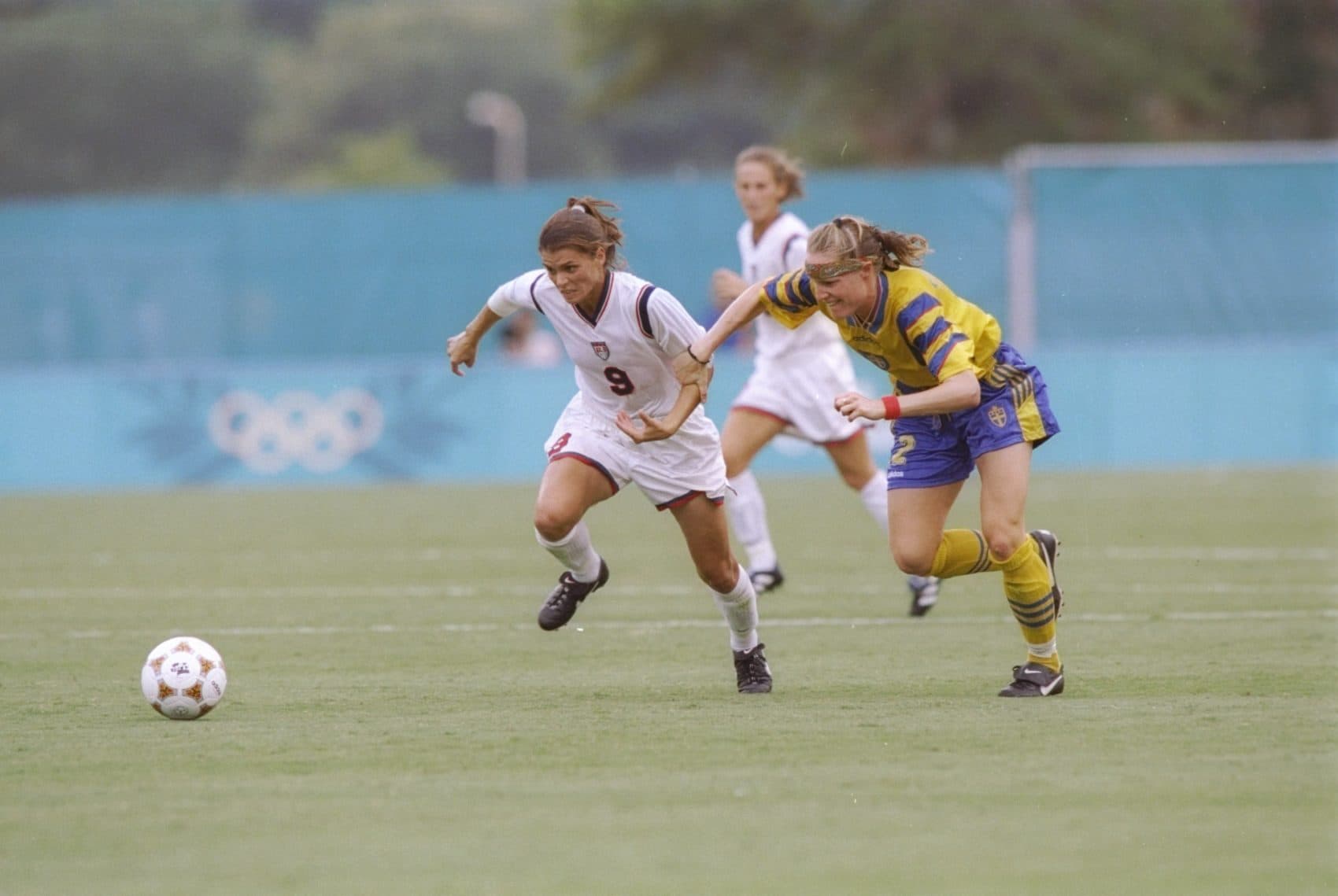
He was right. A few weeks later, the Federation folded its cards. The women would receive bonuses for gold, silver or bronze. The players also got paid pregnancy leave, severance pay, additional performance bonuses and paid nannies for two players who had small children. The nine holdouts returned to the team in early 1996 and started to get ready for the Olympics.
The women took gold at Atlanta. For Kristine Lilly, the victory was sweet.
"That was always our goal," Lilly says. "And to stand on that podium with gold medals and being like, ‘Yes, we did it — and we did it for us, but [also] for the next generation and others.’ I mean, you win and make a statement like that, that’s huge. That’s huge.’ "
"I would say one other thing," team attorney Ellen Zavian says. "I will never forget when the soccer players put a ton of gold medals on my neck and said they couldn’t get here without me."
The Olympic gold put soccer on the national map — along with women’s sports. The U.S. was scheduled to host the next Women’s World Cup, in 1999. FIFA wanted to play the matches in small stadiums and just in the Northeast. But Alan Rothenberg and the Federation stepped up big.
"We petitioned FIFA and said, ‘We have enough confidence in this team and in this country that we think we can put the World Cup on for the women in the big stadiums in the major cities, just like we had done for the men in ’94,’ " Rothenberg says. "FIFA basically said, ‘OK, go ahead and do it.’ They gave us virtually no financial support."
"That was a huge risk that they took, and it paid off tremendously," says UMass Lowell Professor Jeffrey Gerson, who teaches sports and politics. "And it paid off tremendously. They sold out Giants Stadium. They sold out the Rose Bowl — 90,000-plus people. They went beyond anyone’s wildest dreams."
The PK heard 'round the world. Olympic champions. World champions for a second time. It was 1999, and the team was peaking. These young women played great soccer. They were personable and articulate. But the fight wasn’t over. Nike and Gatorade had signed on as sponsors for the U.S. Soccer Federation. Their marquee player: Mia Hamm, star striker for the women’s team.
But even with a woman as the face of American soccer, the Federation poured most of its resources into the men's team, which lost all three of its matches at the 1998 World Cup.
It was time to turn up the heat. The 2000 Summer Olympics weren’t far off. And Julie Foudy felt the balance of power shifting.
"This market that they kept telling us didn’t exist — which was always their first argument they would go to; 'they' being U.S. Soccer — was something we just proved to be wrong," Foudy says.
The Road Map
On to the next round of collective bargaining. This time, their lawyer was Philadelphia sports attorney John Langel. Langel first met the team at a training camp in Greensboro, South Carolina. After two decades spent representing world-class pro athletes, he thought he was done with being starstruck.
"I walked in the room, and I saw — it was a room full of 20–25 women who, in the course of an hour, told me how dynamic they were, how passionate they were, how smart they were, how they were visionaries and saw long into the future," Langel says. "And by the time I left the meeting, the hairs on my arms were standing straight up."
After their World Cup victory in 1999, the U.S. women found their own sponsor and started planning their own victory tour. Twelve matches in 12 U.S. cities. The players, some of whom earned just $9,000 a year from U.S. Soccer, would pocket hefty bonuses.
The Federation, which was planning its own victory tour for the team, wasn’t happy. Yet after a few days of meetings, they folded again.
Along with the right to hold their own victory tour, the players won better salaries, more generous bonuses, improved training facilities and massage therapists. Julie Foudy says these negotiations were even more impactful than the ’96 Olympic tug of war.
"Suddenly, the negotiating tenor changed drastically," Foudy says. "And our demands changed drastically in terms of market and equitable support."
Today, the path cut by the ’99 team serves as a road map for national teams around the world fighting for gender equity. But the fight goes on at home. In March, a few months before this summer’s Women’s World Cup in France, the defending champion U.S. team filed a gender discrimination suit against U.S. Soccer.
Julie Foudy has taken the baton from Billie Jean King and serves as mentor to other female athletes in their fight for parity. Yet as inspiring as the canvas Foudy and her teammates helped to paint might be, she says the work is still unfinished.
"It’s taken 20 years for us to be able to even say we’re at a tipping point for women’s soccer," Foudy says. "So that’s where I get frustrated — in that it wasn’t as speedy a catalyst as I had hoped."
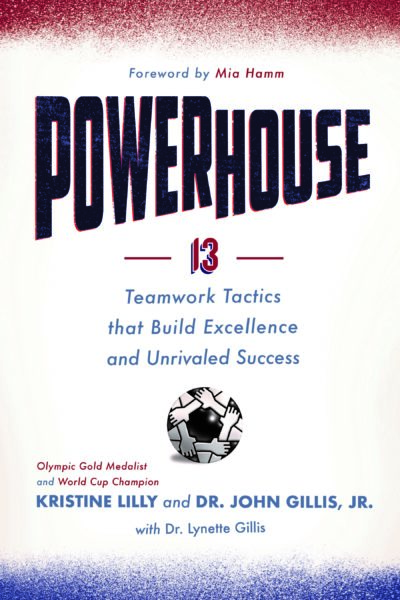
In 2011, 23 years after she asked her parents’ permission to join the U.S. national team, Kristine Lilly hung up her cleats. Today, she runs soccer and training camps and recently published a book on leadership.
Oh, and she coaches her two young daughters’ soccer teams.
"They know Mommy won medals," Lilly says. "But to them, I’m Mom — and their favorite players are Alex Morgan, Megan Rapinoe, Tobin Heath. So Mommy’s like, ‘OK.’ "
This year, nearly 20 years since their 1999 World Cup triumph, Lilly and her former teammates held a reunion in Los Angeles. The ’99ers watched a workout and took photos on the field with the women who now represent the U.S. Many of the current players told Lilly how they’d always looked up to the ’99 team. "That’s great," Lilly replied. "Because now our kids look up to you."
Kristine Lilly is the author of "Powerhouse: 13 Teamwork Tactics that Build Excellence and Unrivaled Success."
Jeffrey Gerson provided planning and production help for this story. He's the author of an oral history of the fight for gender equity in U.S. women's soccer.
This segment aired on June 8, 2019.

